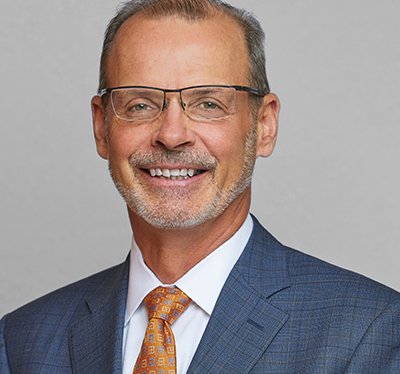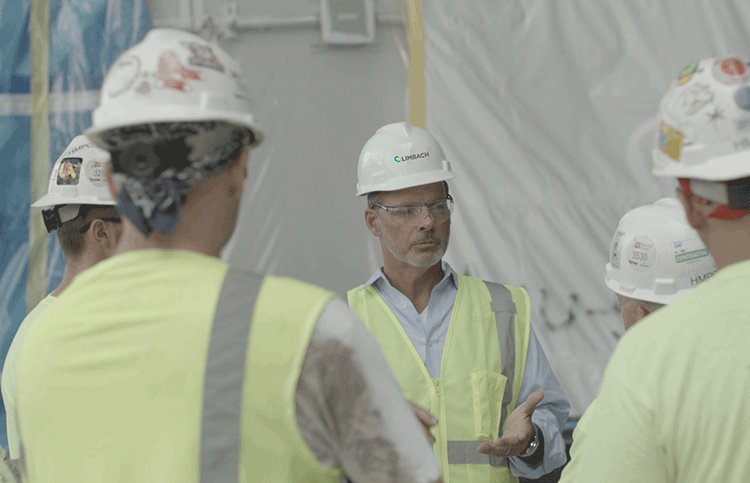2020 CEOs Who 'Get It'


Charles A. Bacon III
CEOLimbach Facility Services
Pittsburgh
Founded in 1901, Limbach Facility Services is the seventh-largest mechanical systems solutions firm in the United States, providing building infrastructure services, with an expertise in the design, installation and maintenance of heating, ventilation and air conditioning and mechanical, electrical and plumbing systems for a diversified group of commercial and institutional building owners. The firm employs more than 1,700 workers.

Why is safety a core value at your organization?
Actually, safety is not a core value of Limbach, but a result of our core values: demonstrating and promoting a culture of caring, striving for excellence, acting with integrity, striving to be the most innovative, being competitive, and holding ourselves accountable to each other.
We developed the Hearts and Minds Commitment to Safety Program as a way for our employees and customers to live their life beyond the numbers. We call it “Beyond Zero.” The Hearts and Minds Commitment to Safety Program was designed to take pride in caring for not only your own safety, but those around you, including our families and all the people we work beside every day.
Describe your personal journey to becoming a CEO who “gets it.” What experiences or lessons brought you to where you are now?
I grew up in a blue-collar, construction-related family. Accidents were talked about, and I occasionally would hear about a fatality from my father, uncles and grandfathers – all of whom were part of the International Union of Operating Engineers Local Union 138 in Long Island, NY. After graduating from college with a construction management degree, I joined a small construction management firm in New York City. Shortly after joining, I witnessed the aftermath of a fatality and thought it was just part of the risks in the industry. Accidents happen.
Years later, I became CEO of that company, which had grown dramatically. During the years of moving up the ranks, I learned that a great safety program isn’t looking at safety as a priority. A great program is embedded culturally. As CEO, I successfully drove the “We Care” culture throughout that firm, which, at the time, had 26 offices between North and South America and was generating $3.4 billion in revenue. During my time as CEO and after my departure in 2003, I spoke at numerous industry conferences about the success being enjoyed, and soon other major competitors started to follow.
Soon after joining Limbach as the CEO in 2004, I launched the “We Care” program. Our company just came out of the Enron bankruptcy, and morale was very low. “We Care” became a rallying message, and it helped save the company. Since then we have enjoyed a strong safety record. In 2017, I decided to rename our safety program to “Hearts & Minds.” Our training is based on winning people over. Winning over their hearts, about caring for each other, and minds, to apply the technical knowledge to stay out of harm’s way. Limbach is a special company that truly cares about its employees and their families.
What is the biggest obstacle to safety at your organization, and how do you work to overcome it?
One thing we have learned throughout the years is that all employees want to do a good job, they want to make their supervisors and company proud, and they want to get the project done on time and on budget. Somewhere along the way of life, people believe that they can skip a step or two without too many repercussions and still get it done on time and on budget, or even sooner and cheaper, while making everyone happy. At the end of the day, that strategy does not work. Take, for example, your commute to work. If you are like most, you drove from home to work. When you were first learning to drive, you were taught all the correct safety rules: don’t speed, wear seat belts, use your turn signals and stay off mobile devices. But along the way, you have skipped one or two of those rules, believing it would get you there “sooner or cheaper.” Most of the time, skipping a few rules has resulted in no harm to yourself or others. But every day it costs someone severely. Sadly, just watching the news every night, you see an event that you know a safety rule was broken and it cost someone their life.
Our biggest obstacle is getting employees to follow the rules that we know save lives, following them every time and assisting those you know who skipped one of those minor steps. Ninety-nine percent of the time, our employees follow the rules. It is up to the whole team to remember that during the other 1% of the time, they need to step back on the safe path, reminding them that, at Limbach, we are not about “sooner and cheaper,” but being safe and accurate. We can explain a delay for safety, but we can’t explain a delay for an injury.
How do you instill a sense of safety in employees on an ongoing basis?
The Hearts and Minds Commitment to Safety Program was developed for safety – to be part of everything we do, not just another rule to follow. Education, engineering, encouragement and enforcement are the four main categories we follow.
- Education is a big part of our program, including:
- Six-hour orientation program
- 6-hour “the Hearts” of the “Hearts & Minds” course
- Four-hour “the Mind” supervisor course
- Limbach PACE training (drivers education)
- OSHA 30-hour requirements
- 24-Hours Annual Education policy
- Weekly safety lessons and safety talks
- This does not include specific safety standards such as confined space, NFPA 70E, fall protection, etc.
- Engineering is where you will find the programs that are built with the company’s policies and procedures, including the company’s daily huddle, where risk and hazards are evaluated based on the task. Engineering also includes preplanning, site-specific safety plan of action, team hand-off from department to department and design by team concept – getting the right people in the room at the right time.
- No human can go without encouragement, and this doesn’t discount the tough, hard-working contractors. Limbach has developed the LIMBUCK program, which helps support the core values – not just safety. Nominations are sent from customers, fellow employees and supervisors, and winners are awarded LIMBUCK cash, which can be used at the company store for anything from shirts to tents and grills.
- Several years ago, Limbach’s Safety Accountability Program, or SAP, was developed as an enforcement program, but it was written in a way that really gave clear-cut answers to what the company requires. There is a list of rules that, if broken, can result in either simple coaching from management or termination. Knowing these rules ahead of time and understanding the reason for them supports a defined safety culture. We also put in place an incident-review team, resulting in these decisions being made as a team and not just up to an individual.
How does your organization measure safety? What are the leading indicators that show you how safe your organization is, and where do you see room for improvement?
A weekly scorecard is completed for management, safety professionals and foremen, including the number of huddles completed, observations completed, corrective actions completed, training completed, claims filed within a timeline, return-to-duty status, safety committee meetings, vehicle inspections, customer outreach program and professional training by safety department members.
All of these programs are to assist with reviewing leading indicators and not the standard safety TRIR and DART ratings. Those types of measurements are too late to stop an injury or prevent property damage.
What role does off-the-job safety play in your organization’s overall safety program? What types of off-the-job safety and health programs does your organization offer to employees?
Limbach has been known for at-home safety gifts to all employees, including safety glasses for the whole family, emergency car kits, gloves for gardening, oven mitts and employees’ written letters to their loved ones. “Bring safety home” has been a huge part of the Hearts and Minds Commitment to Safety process. Several branches have built in a wellness program for the family to participate in with their local YMCAs, they provided free safety training to family members in fire prevention, CPR/AED, self-defense and child car seat testing with local safety professionals. We also have assisted with teen defensive driving courses.
Post a comment to this article
Safety+Health welcomes comments that promote respectful dialogue. Please stay on topic. Comments that contain personal attacks, profanity or abusive language – or those aggressively promoting products or services – will be removed. We reserve the right to determine which comments violate our comment policy. (Anonymous comments are welcome; merely skip the “name” field in the comment box. An email address is required but will not be included with your comment.)


